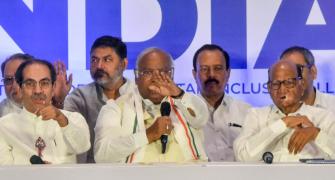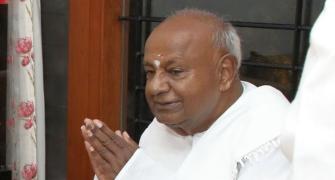Once upon a time movies and television shows came to India years or even decades after they had first launched in the west. Now Discovery Networks -- owners of the upmarket, information-oriented Discovery Channel -- is reversing the old order and launching a new channel in India before taking it to other parts of the world.
The new channel -- to be called Discovery Travel and Living Channel -- isn't a small diversification for the Discovery Channel. It's a major move into lifestyle programming.
The reason for the move? Clearly Discovery is hoping to cash in on the increase in consumerism, double income households, greater awareness of lifestyle and related products.
"We have been studying the Indian market very closely and find that it is the right time to launch such a channel in India," says Aditya Tripathi, director-marketing, Discovery Communications India who is currently heading this initiative.
For starters, Discovery will be getting most of its programmes from abroad but that's likely to change by next year when it will start sourcing some programmes in this country. The 24-hour channel will include programming based on travel, health and fitness, cuisine, automotive shows, home decor and entertaining.
Media experts say that in recent years Discovery has been changing its programme format to pull in the audiences. At one level it has moved away from animal-driven, wildlife programming. Then it has switched to Hindi in order to win bigger audiences. All this has brushed up its TRP ratings.
However, with this move, the impact on revenues is expected to be higher. One Mumbai-based media expert reckons that since lifestyle channels are directed towards the big spenders the channel will be able to charge a premium for their advertisements.
Says another media analyst, "The channel already has some similar shows. But a separate channel will definitely lead to greater visibility and more advertiser interest."
Discovery will be the third player to be looking at the lifestyle section after Star India and Times Television, which are also looking at this space. It will also have to vie for the same target audience -- upscale, young adults -- as the other channels plan to do.
"We expect that this channel will be equal to the Discovery Channel in terms of revenues and viewership in a space of two-three years," says Tripathi. But there could be a battle on the way.
Good hair day
"Indian women want an international look but don't want to let go of traditions," says Werner Robert, managing director Wella India Haircosmetics. It is keeping this in mind that the company has planned a new campaign called Trend Vision, which will be launched in October.
Trend Vision will feature international hairstyles on Indian women and these posters and calendars will be put up at all the Wella salons across the country.
"Women always wonder whether a particular style that looks good on a European woman will look nice on them or not, this way they will know," says Robert.
Nearly 3,000 salons across India use Wella products and another 450 are exclusive Wella salons. Wella does not own these salons but provides technical collaboration and branding.
"We train the employees, help with decor and provide any other assistance that the salon owner may need. In return, the salon uses only Wella products," says Robert.
Wella is looking at expansion in a major way. It is targeting states like Punjab, Gujarat, Rajasthan, Assam and Meghalaya.
By 2006, Wella expects to have around 800 exclusive outfits and another 5,000 salons.
The professional hair cosmetics market is estimated to be around Rs 100 crore (Rs 1 billion) and Wella enjoys a market share of around 22 per cent. L'Oreal is supposed to have a market share of between 25 per cent and 30 per cent. The remaining is divided between the grey market and local players.
Counter offensive
Why has India Inc suddenly put counterfeiting high on its agenda? Last week the Federation of Indian Chambers of Commerce and Industry's Brand Protection committee swung into action by helping the Delhi police to nab one of the city's counterfeit kingpins who is said to have masterminded a Rs 300 crore (Rs 3 billion) business.
This week it's CII's turn to launch its own clean-up drive. The organisation's Piracy Alliance will bring together firms like Tata Motors, Gillette, Microsoft, Nokia and Reliance Industries.
With margins of FMCG firms under severe pressure, thanks to the ongoing price wars, companies like Hindustan Lever and Procter & Gamble, for instance, need all the help they can get.
HLL reckons that it loses about Rs 200 crore (Rs 2 billion) annually and P&G losses are around Rs 50 crore (Rs 500 million) of its Rs 800 crore (Rs 8 billion) turnover. The music industry loses Rs 400 crore (Rs 4 billion) on account of pirated CDs and cassettes. CII estimates that counterfeits account for around 7 per cent of global trade.
Now, to stay a step ahead of fakes, HLL is reinventing the packaging of its personal care products.
"Our R&D centre has come out with some innovative packaging materials, which will make the production of counterfeit HLL products extremely difficult while it will be easy for the consumers to make out the original from the fake," says Ashok Gupta, vice-president (legal), HLL.
P&G is less confident about such measures. P&G executive director, Ashok Chhabra, says that the printing and packaging of the counterfeit products is good enough to trick even experts.
"These guys are importing good printing machines from China," he adds. The industry is demanding tighter laws and stricter action against those involved in counterfeiting. Chhabra laments that it's a bailable offence but the culprits usually go scot-free.
Additional reporting by Smita Tripathi and T R Vivek






